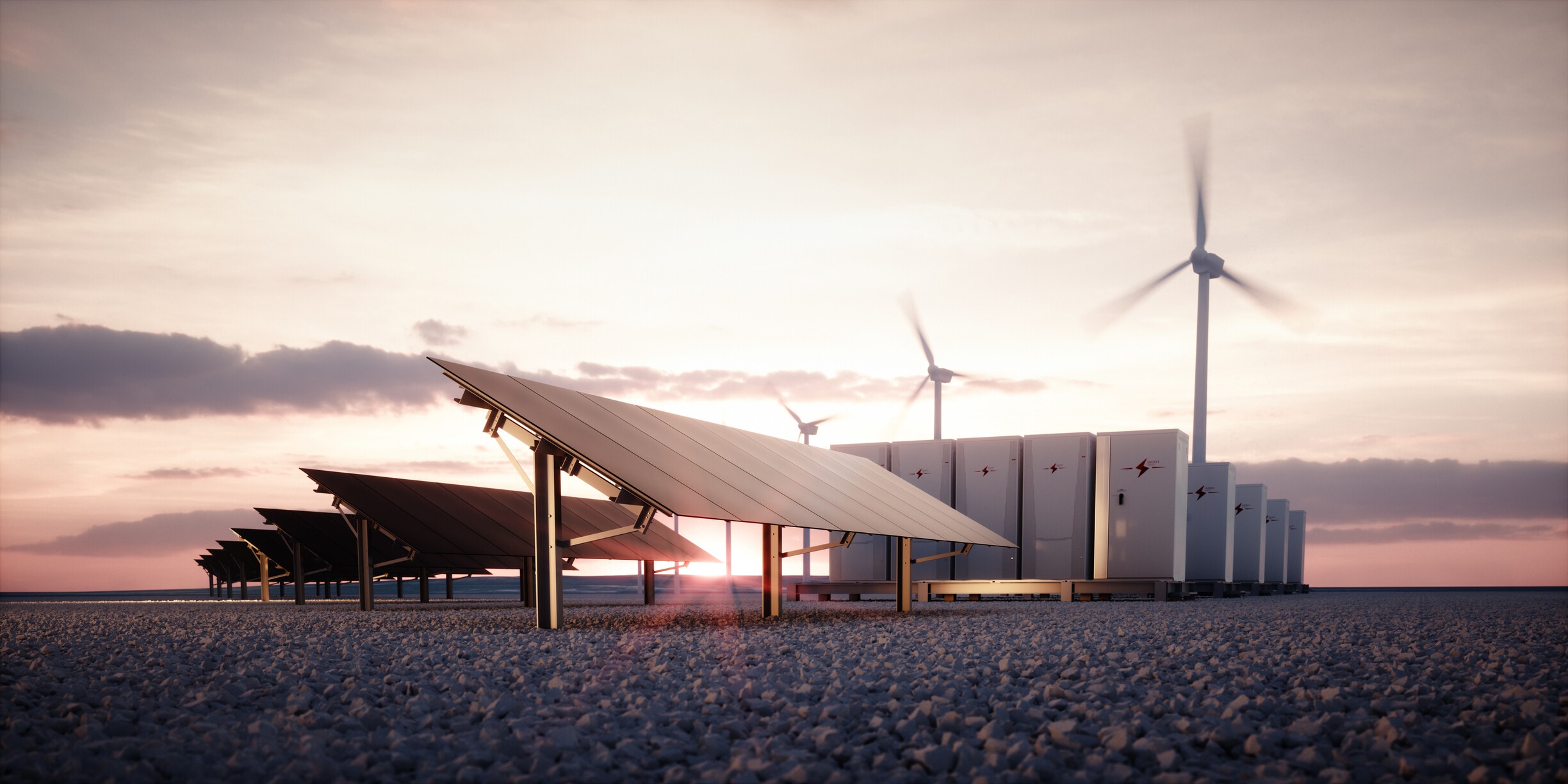How higher interest rates could hold up energy transition investment

Some $75 trillion is estimated to be needed to facilitate the energy transition and deliver net zero by 2050.
Image: Getty Images/iStockphoto
- The global clean energy transition won't come cheap, with $75 trillion estimated to be required to deliver and facilitate net zero by 2050.
- The 'zero era' for interest rates is over, meaning the shift to green energy must be financed amid a less favourable monetary backdrop than previously.
- Here's why action is required and why a higher interest rate environment might be what it takes to get policy-makers to spring into action.
The ‘zero era’ for interest rates in the 2010s is long past and the energy transition won’t come cheap. Most of the investment – $75 trillion is required to deliver net zero by 2050 – in the transformation to a low-carbon energy system will be debt-financed.
So how will higher interest rates affect investment across the energy and metals and mining sectors? The increase in the cost of capital has profound implications for the energy and natural resources industries, particularly the cost and pace of the transition to low-carbon technologies.
Transitioning to a net zero global economy is a monumental investment challenge. Meeting the challenge, already an outside bet, will have to happen against a less favourable monetary backdrop than the world has been used to since 2009.
Investing in the energy transition amid high interest rates
Wood Mackenzie’s recent Conflicts of interest: the cost of investing in the energy transition in a high interest-rate era report delved into the detail.
Here’s a summary of some of the most pressing questions it tackled.
Will interest rates be higher in future than investors have been used to?
Most likely. Interest rates may come down from the current highs in the next few quarters, as inflation falls towards central banks’ targets of around 2%. But structural inflationary trends are intensifying – global trade realignment, deglobalization and production onshoring.
That points to a period of tighter monetary policy in the coming years. We think the ultra-low rates of the decade after the Great Financial Crisis were the anomaly, and interest rates will normalize again through this decade at a higher level.
How do higher rates affect different sectors?
Most projects across the energy and mining sectors are capital-intensive but between sectors, there are differences in balance sheet exposure to debt. Wind and solar projects and nuclear power are typically financed by debt secured against long-term power purchasing agreements (PPAs).
As a result, corporate gearing (net debt/equity) is relatively high, averaging 50% to 60% for the renewables companies in our study. The bankability of these project revenue streams can reduce the cost of debt, but the high leverage leaves renewables companies sensitive to interest rate rises.
Higher rates will reduce renewables’ competitiveness in power markets. Our analysis shows that a 2% increase in the risk-free interest rate pushes up the levelized cost of electricity for a renewables project by 20%, compared with only 11% for a combined cycle gas plant.
Oil and gas and metals and mining companies are less exposed to higher rates. After a period of assiduous capital discipline that has strengthened balance sheets, gearing now averages around 20% in both sectors.
Also, project financing is less common for developments exposed to volatile oil and gas or mining commodities. Among the exceptions in the oil and gas value chain are liquefied natural gas (LNG) and midstream projects, which have comparatively stable revenue streams.
Are higher rates bad news for emerging green technologies?
Nascent technologies that are essential for the transition to net zero are also capital-intensive and will require high levels of investment to scale up. So higher rates will pose another challenge for many projects to get off the ground, whether low-carbon hydrogen, carbon capture, utilization and storage or direct air capture (DAC).
The lack of economic incentives for both carbon capture and a hydrogen market are the most significant obstacles to investment in these sectors. But for projects that could progress, higher interest rates hurt the economics. Developers will either have to take lower returns on the chin or demand higher prices.
Can governments step in to compensate for high rates?
Ideally, governments would boost incentives to ensure that investment in low-carbon technologies doesn’t stall but gains momentum. However, many governments’ own debt and debt service costs are increasing.
Some may be forced to reduce supportive subsidies and tax incentives or cut direct public capital investment in a low-carbon economy. China has already reached the limits of its available funding capacity to subsidize new renewable power projects.
What other levers can policy-makers pull?
Our report highlighted three main levers. First, ensure that subsidies have the maximum impact on global decarbonization, as the most efficient are targeted and non-discriminatory.
Second, a fully functional, tradable global carbon market is critical if countries are to meet their emissions targets. Finalizing the rules of Article 6.4 of the Paris Agreement, which relate to the crediting mechanism, at COP29 in Azerbaijan in November is a must.
Third, drumming up climate finance – be it from the private or the public sector, or both – is critical to supporting green investment in climate change mitigation and adaptation in developed and developing economies.
In addition to improving the availability of finance, so-called ‘green rates’ could offer preferential interest rates to finance low-carbon projects and offset the higher rate environment.
Action needed to finance energy transition
If higher interest rates persist, transitioning to net zero will be even more challenging.
Consumers and end users of energy and commodities are likely to pay more, and the transition to net zero will be delayed even further. Action is required to avoid, or at least mitigate, such an outcome.
What's the World Economic Forum doing about the transition to clean energy?
Furthermore, rising interest payments and debt constraints risk limiting the public sector’s ability to contribute to financing the energy transition, either directly by capital investment or through subsidies and tax credits.
Policy-makers need to act to offset the interest-rate headwinds. Removing obstacles to low-carbon project approvals and maximizing the efficiency of incentives will help.
Strengthening global carbon markets, increasing subsidy efficiency and mobilizing green finance are also essential. A higher interest-rate environment might be what it takes to get policy-makers to spring into action.
Don't miss any update on this topic
Create a free account and access your personalized content collection with our latest publications and analyses.
License and Republishing
World Economic Forum articles may be republished in accordance with the Creative Commons Attribution-NonCommercial-NoDerivatives 4.0 International Public License, and in accordance with our Terms of Use.
The views expressed in this article are those of the author alone and not the World Economic Forum.
Forum Stories newsletter
Bringing you weekly curated insights and analysis on the global issues that matter.
More on Economic GrowthSee all
Chavalit Frederick Tsao
August 19, 2025
Laurel Taylor
August 18, 2025
Yufang Jia and William Jernigan
August 18, 2025
Antara Choudhury and Vivin Rajasekharan Nair
August 14, 2025
Atul Kumar
August 12, 2025






